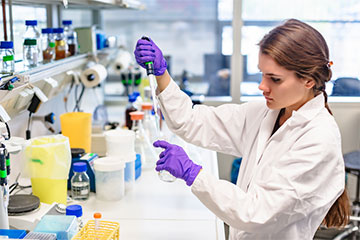
[Shutterstock, Inc. (Contributor Pavel Gulea)]
Many dedicated scientific researchers and professionals fill another important role as well—that of a mother or caregiver. In addition to the challenge of balancing the demands of work and children, mothers have also historically faced structural barriers that hinder their career progression and push many out of the workforce. In contrast, men’s career trajectories are typically less affected by parenthood, says the nonprofit advocacy group Mothers in Science (MiS).
MiS and 17 other organizations—together representing hundreds of thousands of female scientists—have united to put forward the “Global Call to Action for Mothers in Science: Action Plan for Funding Agencies 2023,” a policy plan that they say will help eliminate gender bias in the funding system and promote inclusion of caregivers in STEMM (science, technology, engineering, mathematics and medicine).
The “maternal wall”
Despite the success of efforts to recruit more women to STEMM, the sector still struggles to retain them. Women now make up half of the population at the training and graduate levels in many STEMM fields, but they are still greatly underrepresented in faculty and leadership roles, MiS argues.
A 2019 study showed that 42% of mothers and 15% of fathers in the United States leave their full-time STEM employment within three years of having children (PNAS, doi: 10.1073/pnas.1810862116). According to MiS, discrimination against women with children—also known as the “maternal wall”—combined with family-unfriendly, inflexible work culture and internalized gender roles, contributes to the pressure on mothers to step back from their careers.
Studies also show that women have lower success rates than men in obtaining research funding, which is fundamental to scientific production and career growth—a disparity that MiS says is due to bias and inequity in the grant evaluation process.
Pandemic effects
The COVID-19 pandemic has only increased the disadvantages of women in the workforce and thrown longstanding inequities into stark relief. At the start of 2020, women held about half the jobs in the United States. By the end of the year, they held 860,000 fewer jobs than their male counterparts.
One reason for this is the unequal sharing of the additional domestic labor that stemmed from the pandemic. A 2010 study indicated that female scientists, including those in dual-academic couples, did nearly twice as much housework as their partners. As COVID-related restrictions and closures created a larger burden of household and child care responsibilities, women continued to shoulder more than their share of the increased work. According to a poll conducted by MiS, over 60% of women said they spent more time than their spouse on homeschool or caregiving during the pandemic—making it increasingly difficult for them to maintain a career as well.
Call to action
The “Global Call to Action for Mothers in Science” outlines practical, actionable steps that funders can take to support mothers in science and eliminate systemic inequities. Each step is accompanied by real-world examples of the policy in practice.
One central recommendation is to provide financial support for parents and caregivers, including paid parental leave; re-entry scholarships, fellowships, and grants after such leave; and child care subsidies for conference travel. Flexibility is another key, including extensions to grant eligibility for researchers taking leave, deferments to award start dates, and flexible or remote work options.
The plan also calls on funding organizations to eliminate bias by implementing gender equality plans and quotas, reforming the grant application and evaluation process, and monitoring diversity and inclusion to address gaps and inequities as they arise.
“Career advancement in STEMM academia depends entirely on securing research funding. It is time funding agencies step up and implement policies to eliminate gender and maternity bias in the grant evaluation process and to ensure an equitable distribution of research funding resources,” said Isabel Torres, co-founder and CEO of MiS and an author of the action plan.
